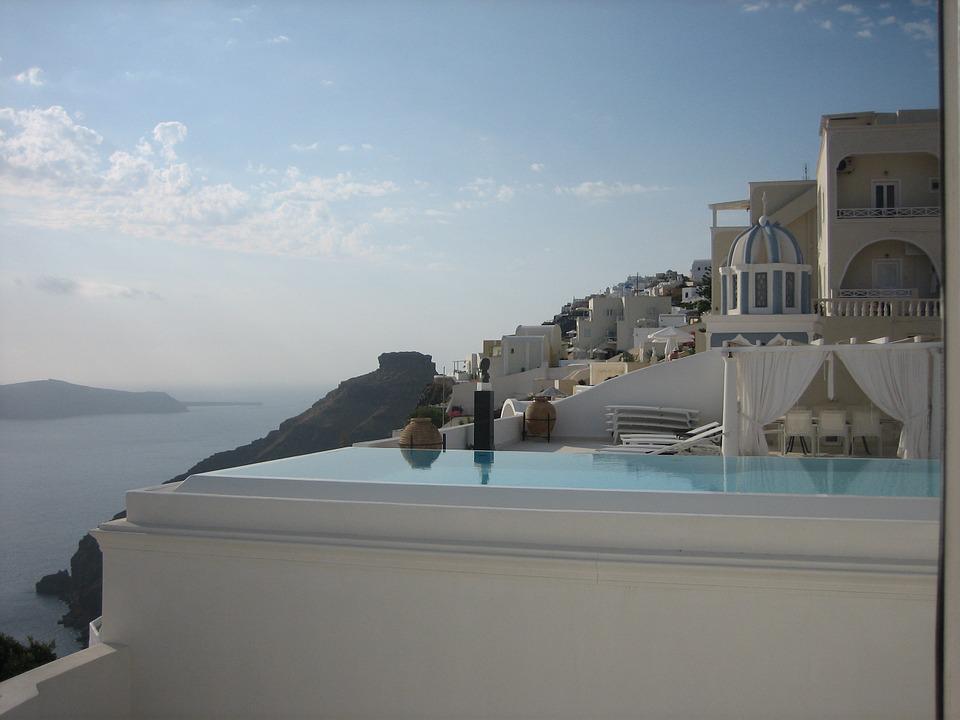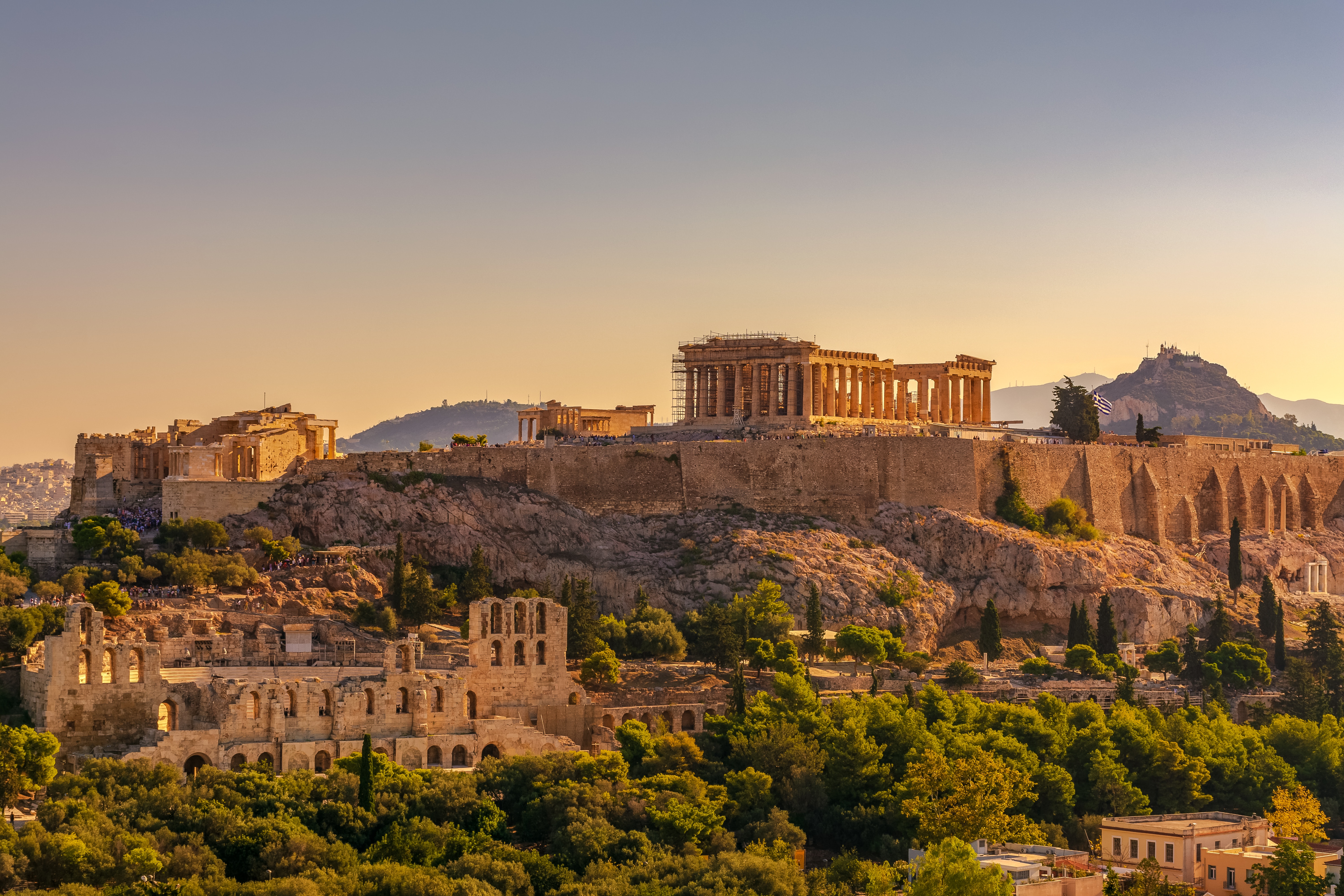Uncover the wonders of Greek Antiquity with our Greece tour packages, highlighting the magnificence of the Acropolis of Athens. Situated atop a limestone hill, this iconic site exudes the essence of classical architecture and artistic brilliance. Immerse yourself in the history of Athens, from its victory against the Persians to the establishment of democracy, as you explore on our Athens tour packages. Secure your place today and experience the grandeur of the ancient world firsthand

In the age that followed, as thought and art flourished, an exceptional group of artisans was put to work to give life to the ambitious plans of the Athenian statesman Pericles, under the expert guidance of the sculptor Pheidias. Jointly they transformed the rocky hill into a unique monument of thought and art. Most of the import monuments were built during that time and The Acropolis of Athens is one of them.
The Parthenon, an enormous doric-style temple dedicated to Goddess Athena, built by Ictinus, the Erechtheon, a sacred iconic temple made of marble which honoured Goddess Athena and several other gods and heroes, best known for its porch supported by six Caryatid maiden statues, the Propylaea, the monumental entrance to the Acropolis, built by Peisistratus, designed by Mnesicles and the small temple Athena Nike located to the right of the Propylaea are some of the notable creations.
The Acropolis’ flat top is the result of thousands of years of construction beginning as far back as the Bronze Age. There’s no recorded history of what happened at the Acropolis before the Mycenaeans cultivated it during the end of the Bronze Age. Historians believe that Mycenaeans built a massive compound surrounded by a great wall, almost 15 feet thick and 20 feet high on top of the Acropolis to house the local ruler and his household. Strong fortification walls have surrounded the summits of the Acropolis for more than 3300 years. The perfection of ancient building techniques ensures the resistance of the monuments to natural forces through time.
The Authenticity of the Acropolis Hills, crowned with the masterpiece of the Greek art and architecture, is well preserved. Despite the unavoidable damages of time, they still display their beauty and convey their inestimable artistic and historic value, preserving all the features that directly and tangibly associate them with the events and ideas of democracy and philosophy.

As Greece endured many unwelcome invaders, the Acropolis, its temples and monuments were converted into chapels, mosques and storehouses. On September 26, 1687, the Venetians even bombarded the Acropolis and decimated the Parthenon. After the Greek war of independence in 1822, the Acropolis was returned to the Greeks in despair. In order to maintain the authenticity and the structural integrity of the monuments, an integrated intervention committee for the conservation of the monuments on the Acropolis was established in 1975 and continues even today. They also work to minimize environmental damage caused by pollution and weathering and are identifying ways to limit future damage.
Pickyourtrail asks every traveler, what would a visit to Athens be without going to the Acropolis to see the Parthenon? And still, people ask me why the Parthenon is so important. It’s because it was the most perfect building built by the world’s most advanced civilization and even though we have been studying it for centuries, we are still not sure how they did it. The Acropolis of Athens is the most striking and complete ancient Greek monumental complex that still exists in our times. It is one historical site you can’t miss. Explore this iconic destination and more with our exclusive honeymoon packages and international tour packages, tailored to make your journey truly unforgettable.
Check-Out Our Top-Selling Greece Tour Packages
Greece Honeymoon Tour Packages | Greece Family Trip Packages
Do Visit These Famous Attractions in Athens
Temple of Hephaestus Athens | The Parthenon of Athens | Erechtheion Temple in Athens | Agora in Athens | Odeon of Herodes Atticus Athens
Related Itineraries

Marvellous 7 Nights Greece Tour Packages From India
- Flights excluded
- 3 star accommodations
- 4 activities
- Shared transfer
₹ 53,487
Starting price/person

Gorgeous 10 Nights Greece Holiday Package from India
- Flights excluded
- 1 star accommodations
- 6 activities
- Shared transfer
₹ 73,853
Starting price/person

Athens and Santorini Vacation Packages
- Flights included
- 2 star accommodations
- 8 activities
- Shared transfer
₹ 98,467
Starting price/person

Athens Mykonos Santorini Packages
- Flights excluded
- 2 star accommodations
- 7 activities
- Shared transfer
₹ 95,060
Starting price/person

Spectacular 7 Nights India to Greece Packages
- Flights excluded
- 1 star accommodations
- 9 activities
- Shared transfer
₹ 71,985
Starting price/person

Rejuvenating 6 Nights Greece Packages
- Flights excluded
- 2 star accommodations
- 7 activities
- Shared transfer
₹ 48,617
Starting price/person

Mykonos Santorini Crete Package
- Flights included
- 3 star accommodations
- 5 activities
- Shared transfer
₹ 1,17,557
Starting price/person

Athens Mykonos Santorini Crete Package
- Flights included
- 3 star accommodations
- 5 activities
- Shared transfer
₹ 1,28,651
Starting price/person

Exciting 7 Nights Greece Packages from India
- Flights excluded
- 2 star accommodations
- 6 activities
- Shared transfer
₹ 54,199
Starting price/person

Romantic 9 Night Greece Christmas Packages
- Flights excluded
- 3 star accommodations
- 3 activities
- Shared transfer
₹ 2,10,340
Starting price/person



